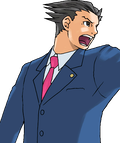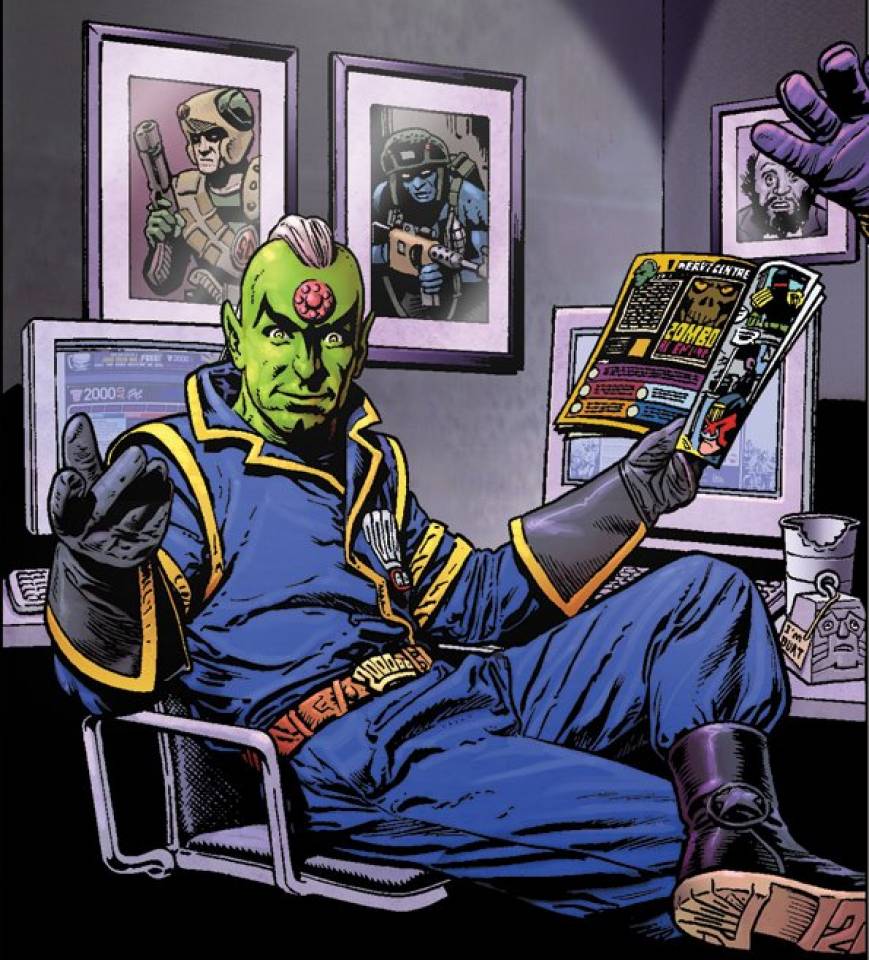Feature Song: We Want The Airwaves by the Ramones (July, 1981/Sire Records/New York, NY)
Despite exploding onto the scene around the same time, TV and Rock Music have always had a tenuous relationship. Around 1950, TV networks were interested in satisfying the broadest needs of the ~5 million households that owned a television. Rock 'n' Roll was too loud, rebellious, and (to put it more plainly), black for wholesome television. When Rock 'n' Roll broke in 1952, there were ~25 million TV sets in homes across the nation, and a great many of those watching TV belonged to a brand new demographic, the "Teen-Ager." These new Teen-Agers, or "Teeny-Boppers" were gaining a sort of financial independence, which made them ripe for advertisers. However, Teens liked Rock 'n' Roll, and that meant Rock 'n' Roll would have to go on TV eventually. By 1956, white people had finally put together competent Rock 'n' Roll acts that could appear on television, but even then, it had to be sanitized. Elvis Presley's first TV appearances had him shot from the waist up for fear that his pelvic gyrations would be too much for the TV-watching public. But the real damage had been done, as Rock 'n' Roll was sonically exotic, visually exciting, and most importantly, accessible. In 1957, Bandstand went national, becoming American Bandstand, while Ozzie Nelson's son Ricky began performing Rock 'n' Roll numbers on the nationally syndicated Adventures of Ozzie & Harriet Show. These shows, along with The Ed Sullivan Show, did a lot to sanitize Rock 'n' Roll's image. However, they tended to feature only the most family-friendly acts.
On New Year's Day 1964, the BBC launched weekly pop chart programme Top of The Pops, counting down the top 20 singles of the week with performances by some of the featured artists. The first show featured The Rolling Stones performing I Wanna Be Your Man and a promotional video for that week's #1 single, I Want To Hold Your Hand by The Beatles. Just over a month later, The Beatles would perform live on The Ed Sullivan Show, revealing that Br!tish Rock 'n' Roll was far more TV-friendly than what Americans were doing. This not only kicked open the door for The Br!t!sh Invasion, but also pushed Americans to develop a more mature form of Rock 'n' Roll. This would lead to Folk Rock becoming the dominant form of homegrown Rock music in the country, while the Br*ts would pioneer Blues Rock and Progressive Rock. These sounds would be deemed too underground for TV in America or in the UK, leading them to appear on Beat-Club in West Germany. This would feed back into Top of The Pops, who would begin to feature stranger, more visually captivating artists like Arthur Brown and various Glam Rock acts in the Early 70s.
This is the world Punk Rock was born into in the late 60s-early 70s. While Link Wray and The Kingsmen had national TV appearances, and Los Saicos got their big break on Peruvian national TV, most proto-punks never really got to be on TV. For example, The Fugs were simply too radical to be featured on American airwaves, however they did appear on Swedish TV in 1968. Similarly, The Velvet Underground would have to make concessions to censorship if they wanted to be on TV, which they considered selling out. MC5 made a handful of appearances on local Detroit music show The Lively Spot in 1970, before issues with the US Government pushed them off the airwaves and over to Germany, where they performed on Beat-Club. Needless to say, Iggy and The Stooges were just too obscene for TV. This is the way things were when Punk was formalized in the mid-70s. While some acts, like Television, would have dismissed the opportunity to appear on TV, others like the Ramones, Blondie, and DEVO would have relished the opportunity. Unfortunately, earlier acts had made it unlikely for TV broadcasters to come asking for them.
Things were just a touch bit different in the UK, however, as Glam Rock had been a big ratings win for Top of The Pops and the weekly chart shows that followed. When The Saints hit it big with (I'm) Stranded in 1976, Punk was still unknown to the UK public, who saw it as a younger, snottier extension of Glam. When the Sex Pistols rose to notoriety, the first show to have them on was Tony Wilson's So It Goes.. Shortly thereafter, it was over to Today with Bill Grundy, when the Pistols gave us the most controversial 2 minutes in Br*tish television. The resulting media circus made it so the only acceptable place for Punk on Br*tish TV was lambasting on the nightly news. But then, on January 25th of 1977, the news rang out that Punk had died. In its wake came New Wave, which was cleaner, less boisterous, and overall more presentable. When The Jam's debut single In The City made it into the charts in May, they were invited to perform on Top of The Pops, and it wasn't long before more acts in the punk sphere got the invite. This posed a conundrum to the punk crowd:
On one hand, Top of The Pops was a product of the BBC. The Man. Appearing on the BBC was like consorting with The Enemy. However, if you did go on Top of The Pops, you were making Punk accessible to young people across the nation in a way it never would have been otherwise. Helping matters was the fact that nobody actually played on most of these shows. Performances on Top of The Pops and other weekly shows featuring live bands were almost universally 'mimed' over a backing track. This was due to TV studios being ill-designed for live music and a perceived lack of technical skill among Rock and Pop acts. However, the fact that it was all mimed meant that you could subvert it. Examples include Hugh Cornwall's no-hands guitar solo on No More Heroes and Bob Geldof playing the candelabra in the intro to Rat Trap. However, the all-time kings of screwing with TOTP wouldn't arrive until 1994, when Manic Street Preachers went on in IRA regalia. Still, the overall idea among UK Punks was that being invited to play on TOTP was an admission from the BBC that they had "made it."
Meanwhile, back in the US of A, Punks eventually settled on an acceptable way to appear on TV: Public Access. Counterculture writer Coca Crystal launched weekly call-in show If I Can't Dance, You Can Keep Your Revolution in 1977, and it finally ended production in 1995. Coca Crystal described her show as "an hour of talk, telephone, and technical failure." She opened every episode by lighting a joint before talking about news items relating to her staunch Leftist politics. Guests on If I Can't Dance... included the likes of Abbie Hoffman and Cesar Chavez, along with Debbie Harry of Blondie and Tuli Kupferberg of The Fugs. After appearing on the show in 1978, Glenn O'Brien was inspired to create his own public access call-in show, TV Party. The Coca Crystal Show and TV Party would go onto inspire a slew of other lo-fi public access talk shows, including one of my all-time favorites: The Chris Gethard Show.
And then...
Saturday, August 1st, 1981, 12:01 AM.
An apt choice, all told. Artists had been making promotional videos for their music since there were talkies, but nobody had ever thought of broadcasting just that, 24 hours a day. And so it came to pass that Music TeleVision was born. Despite the sheer volume of video the fledgling channel had access to, they almost immediately found themselves starved for relevant content. To put this into perspective: for the first few years of their existence, the artist with the most videos in circulation on MTV was Rod Stewart. Music videos didn't need to be good, they just needed to exist. That's where the punks excel. Bands like the Ramones, Blondie, DEVO, and Black Flag put together simple videos on shoestring budgets and got Punk music into regular rotation on what was functionally a national radio station. Kids from Maine to California were watching the same videos and taking in the same music, and that meant they might be taking in Punk. However, the easy times couldn't last forever. 1983 saw the much-ballyhooed debut of the video for Thriller. Produced for a whopping $500 000 under director John Landis, that music video is more like a short film. Thriller entered heavy rotation and the race was on for other bands to keep up. Punks couldn't keep up with that kind of money, but still managed to wind up on MTV, either by being visually striking, refusing to play the game, or just by being too weird to look away.. Punk (and its children) would return to MTV in a more formalized way with the creation of the 120 Minutes block in 1986, but for a brief while at the start of the channel, punks got pretty close to running the show.






This is hilarious to me, especially since Conan, the archetypal Barbarian, doesn't behave like that at all.